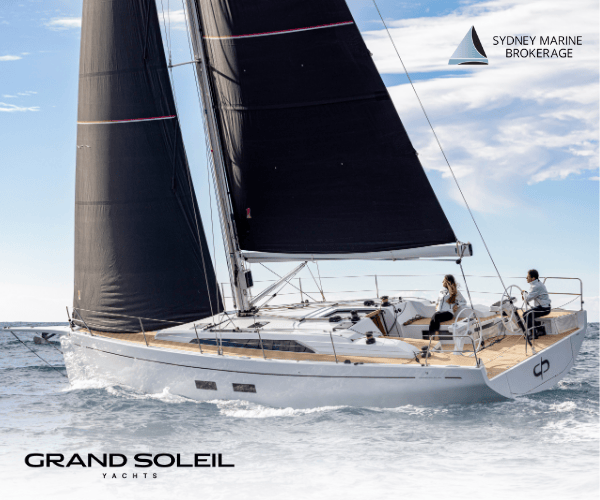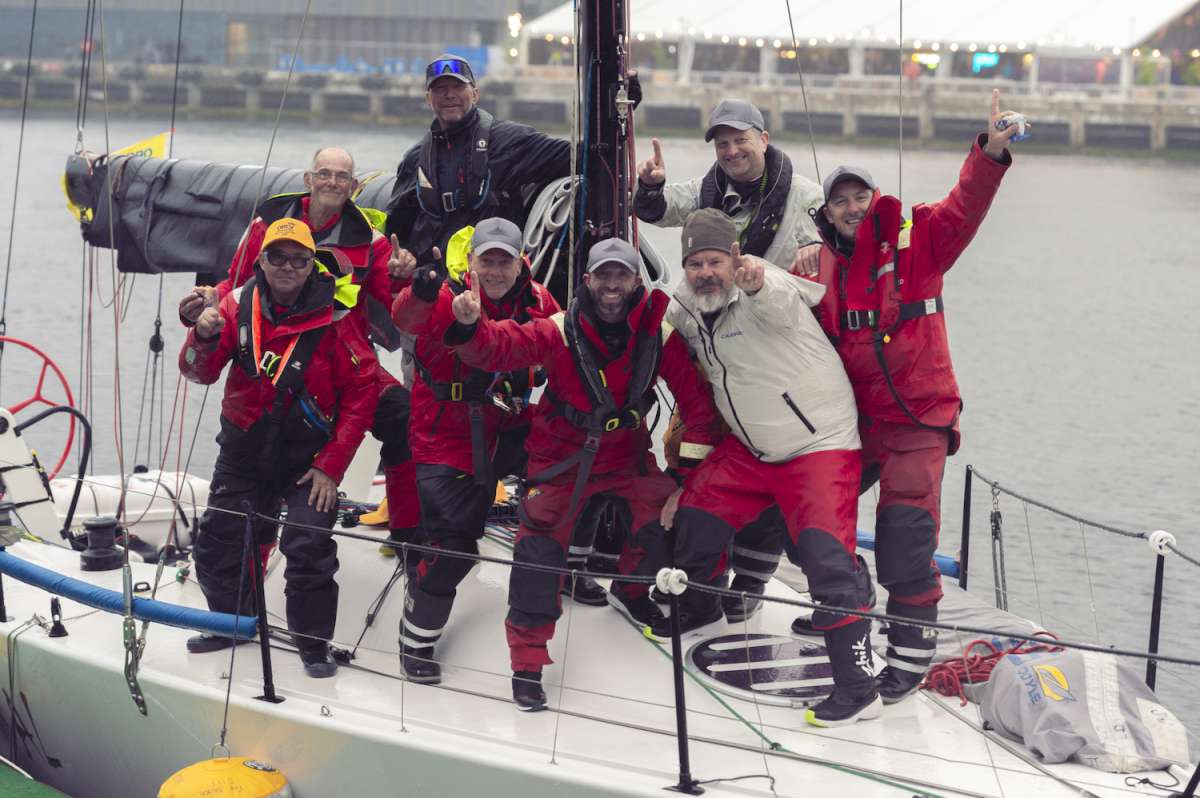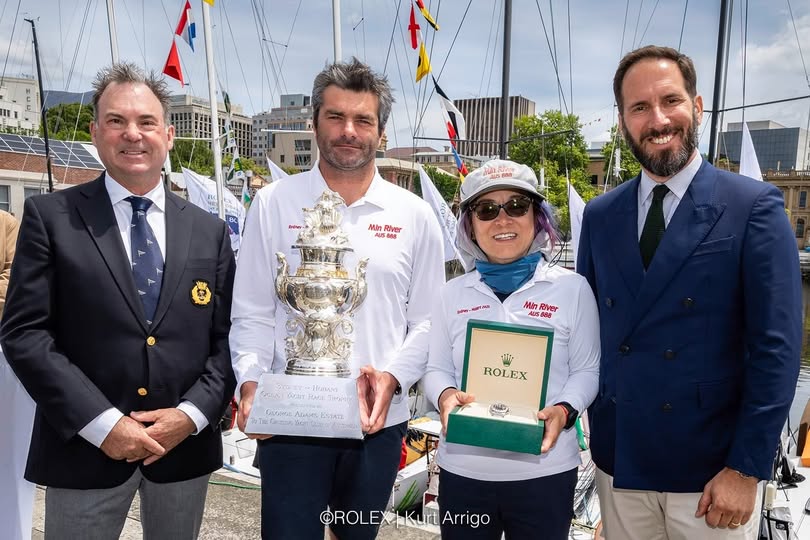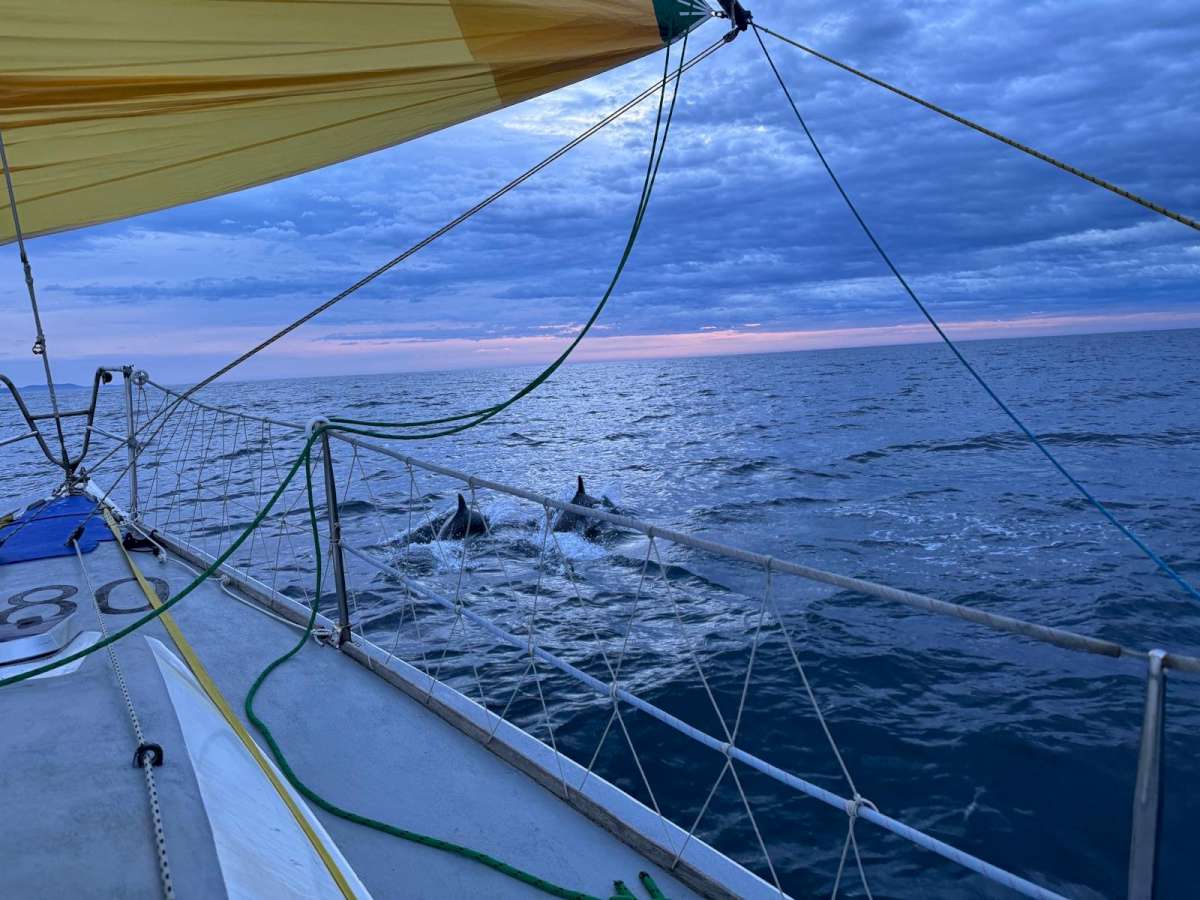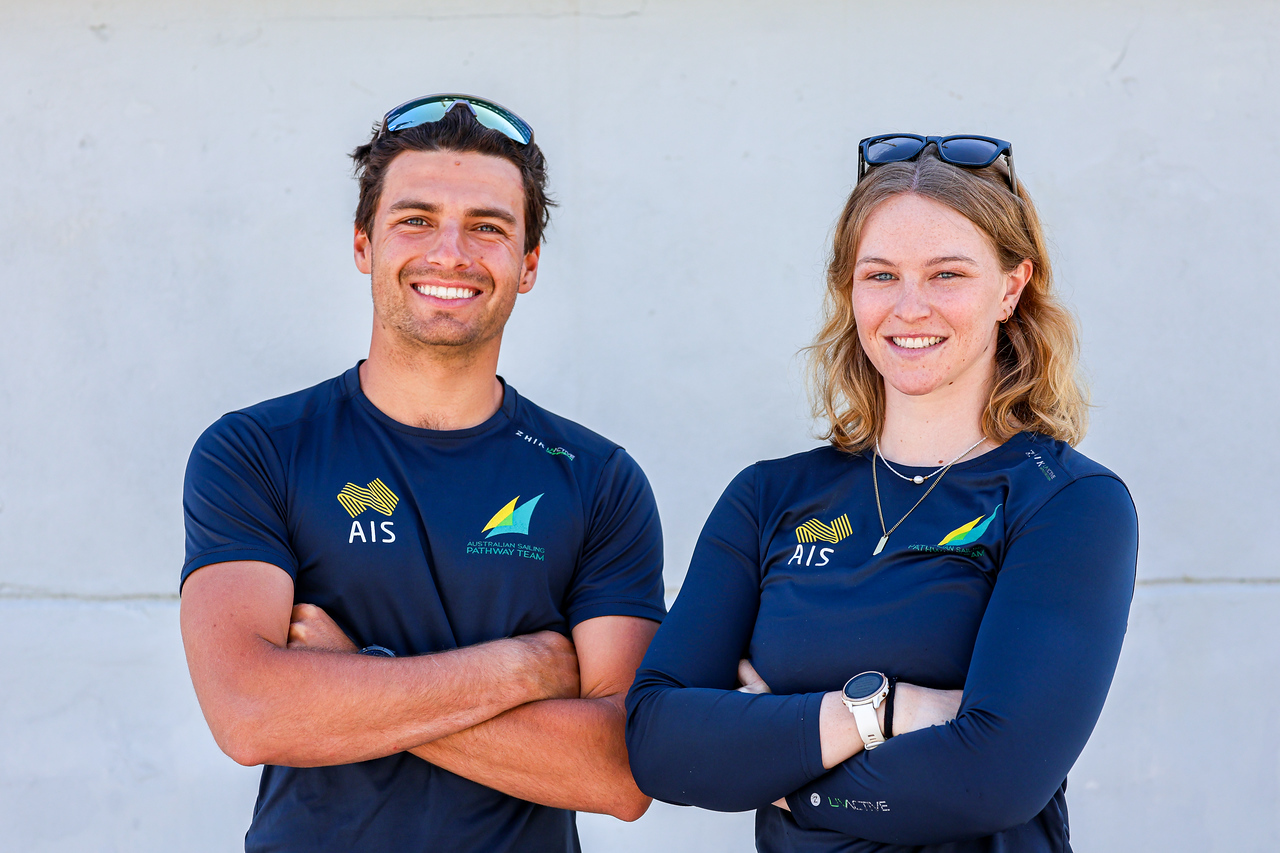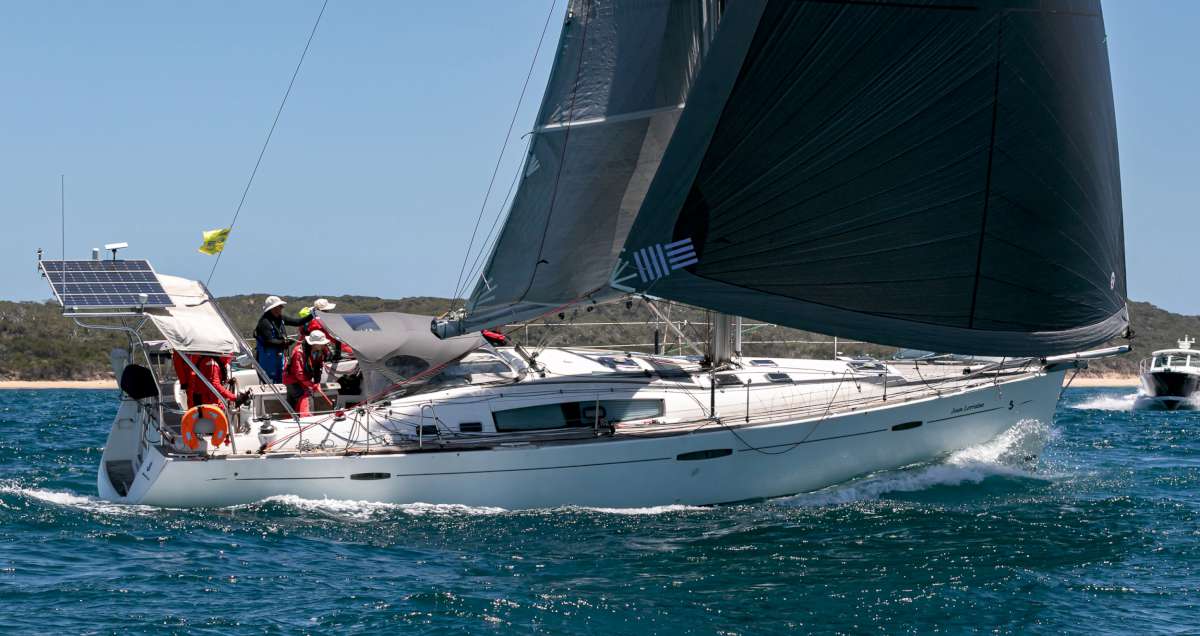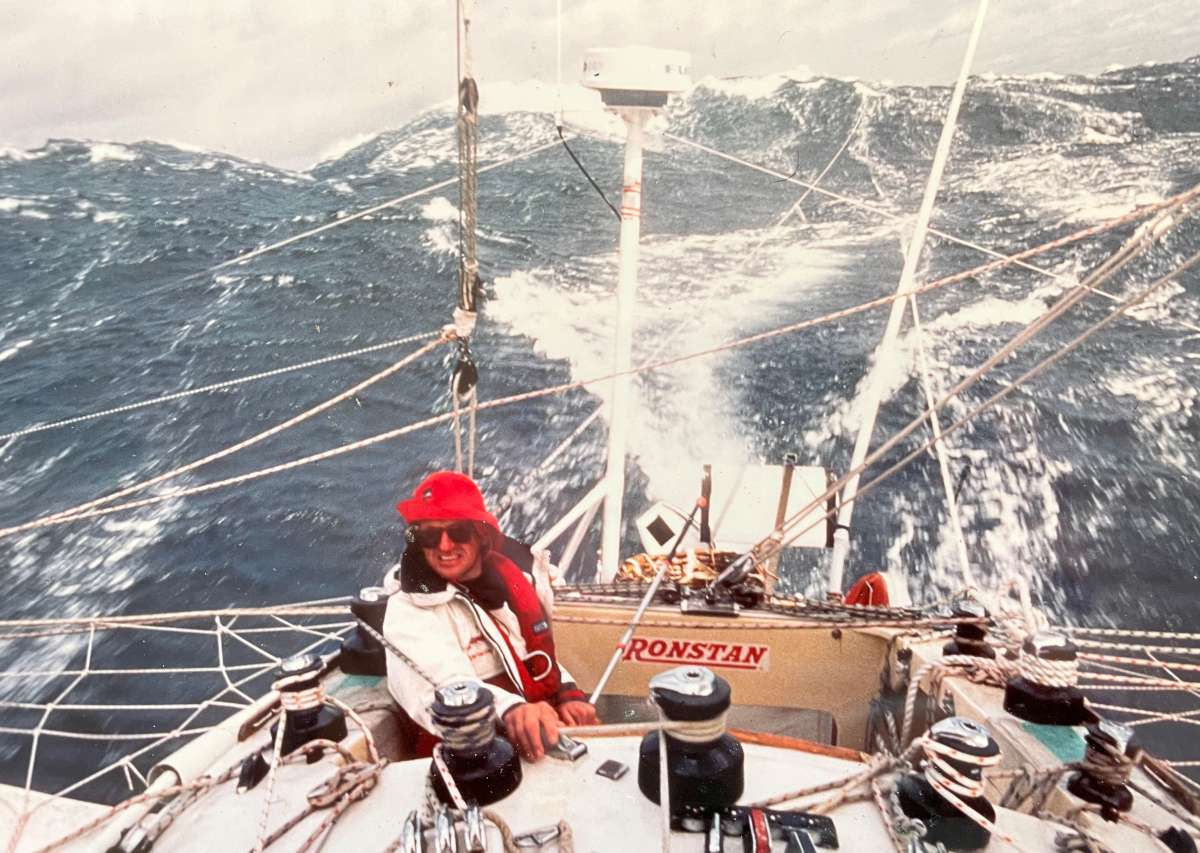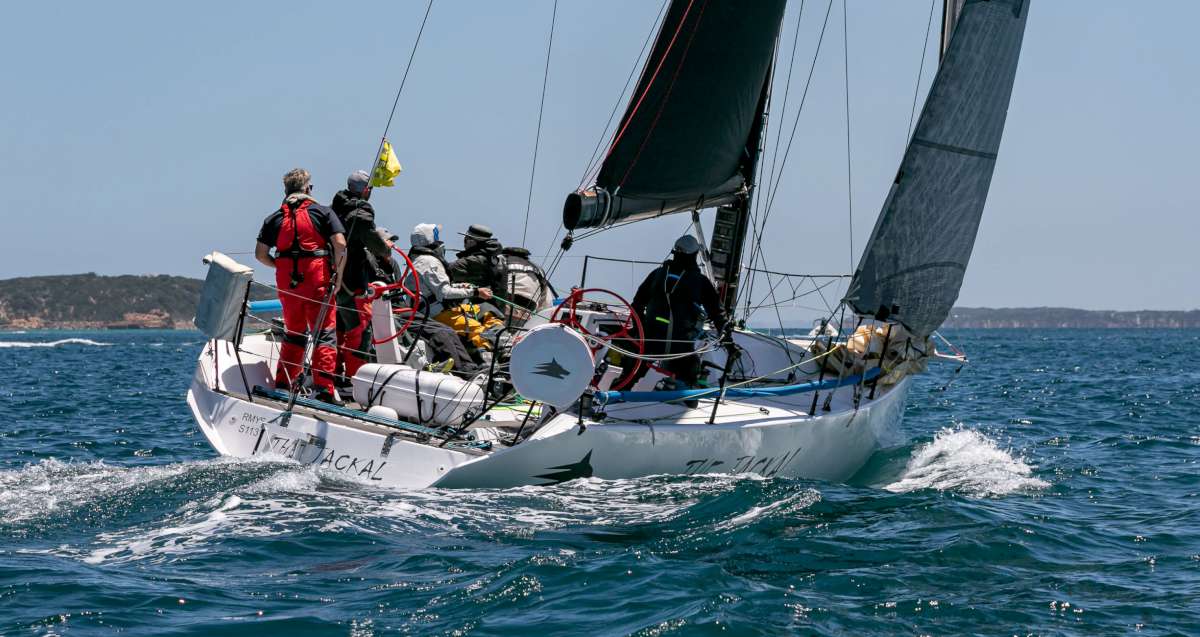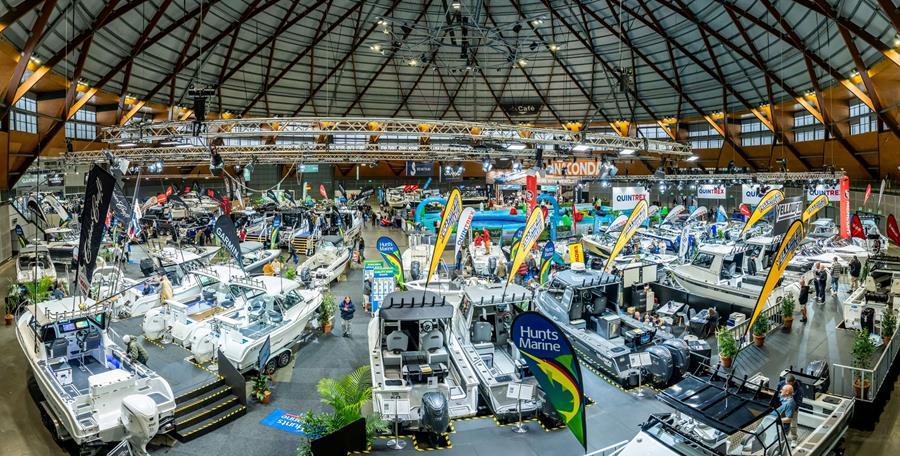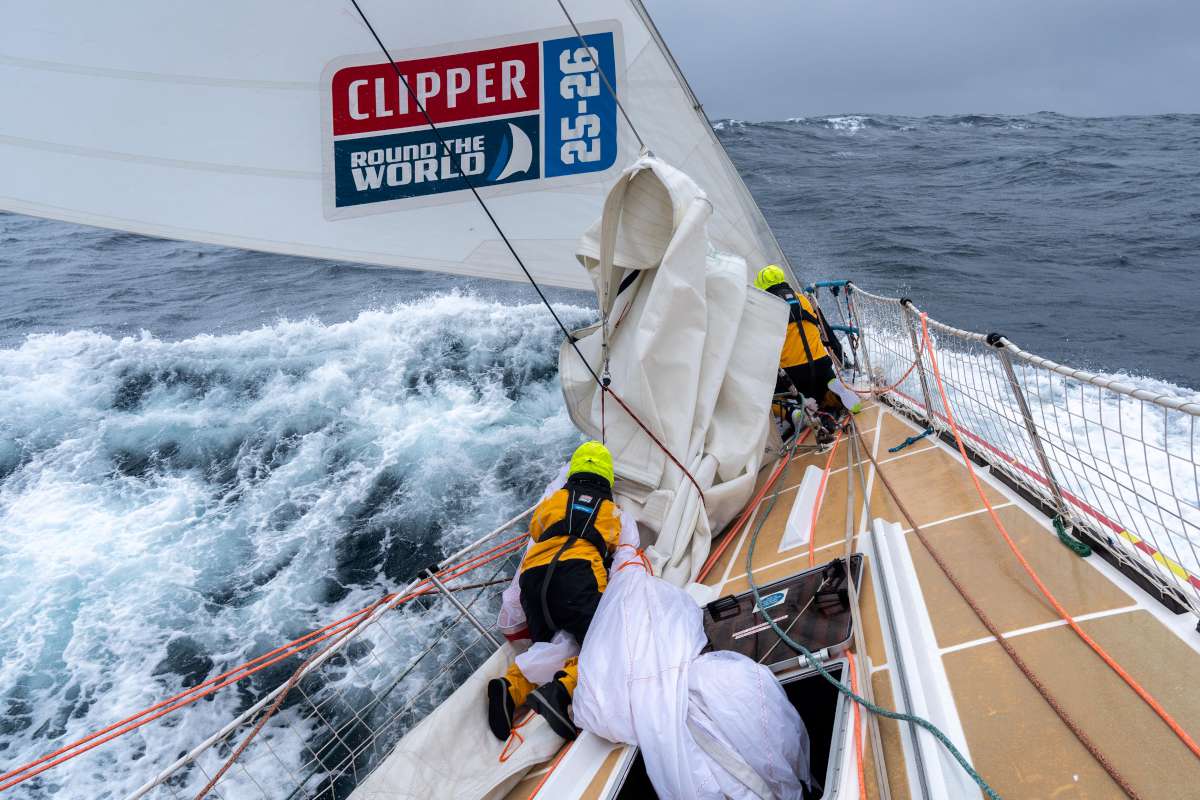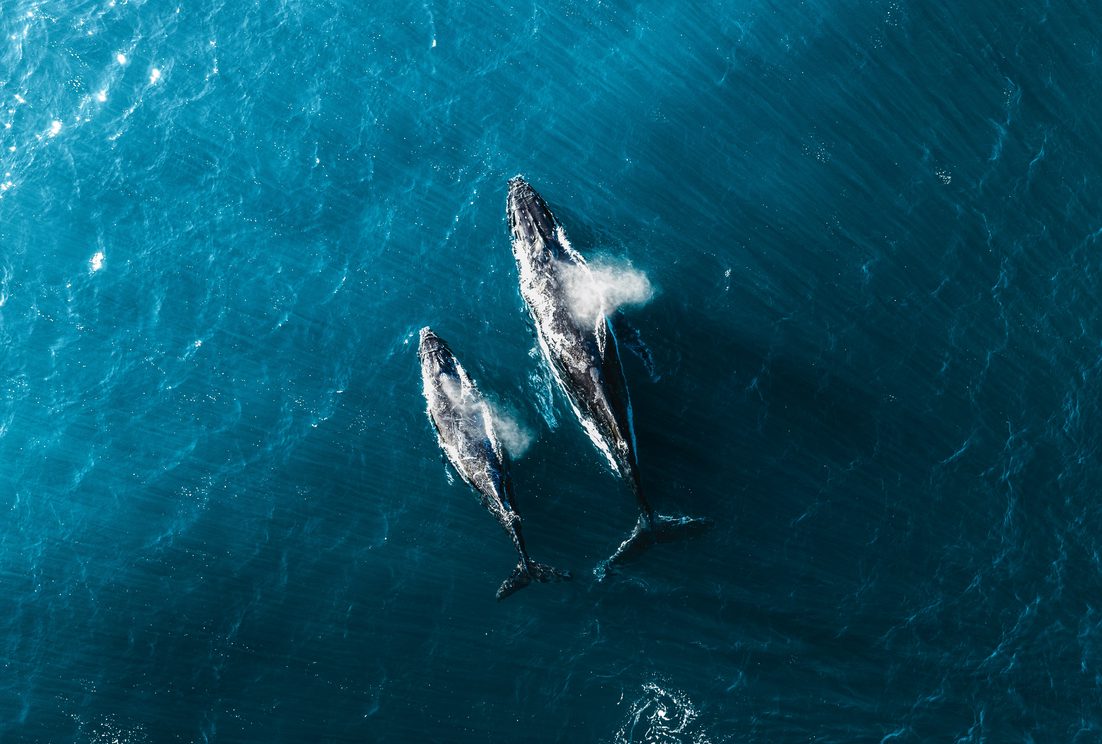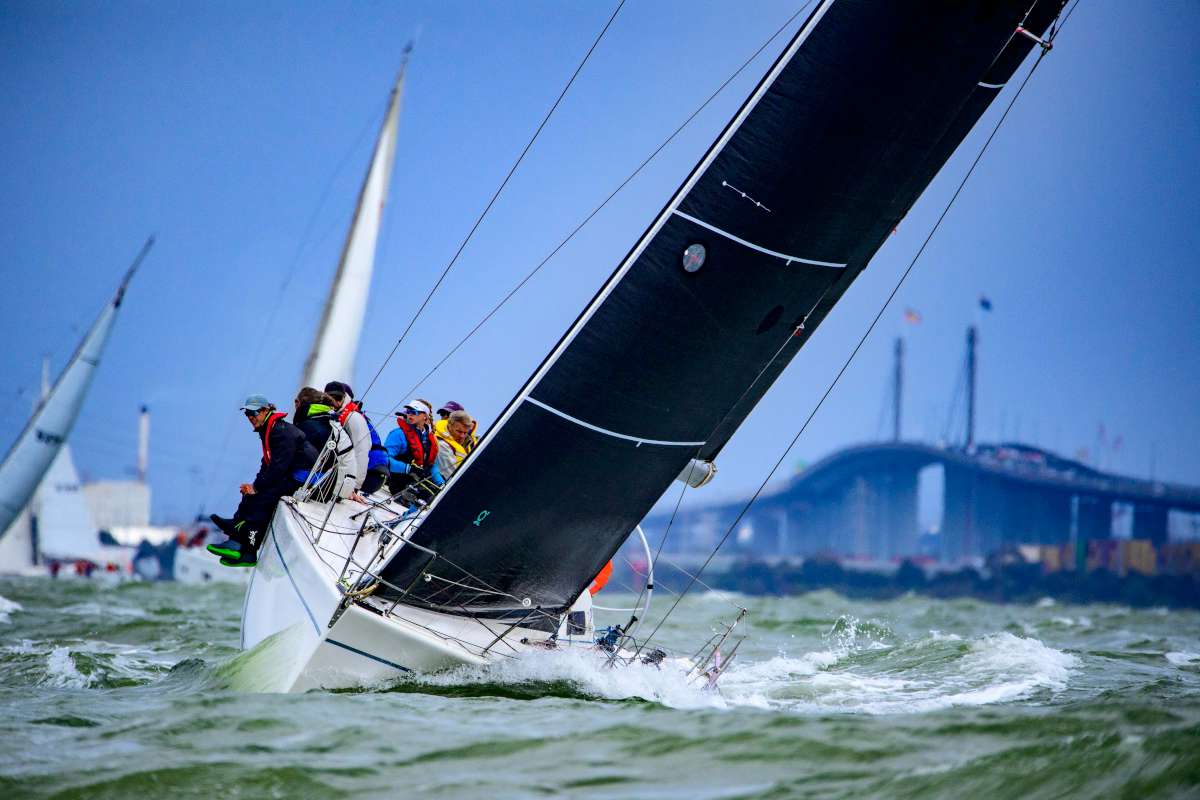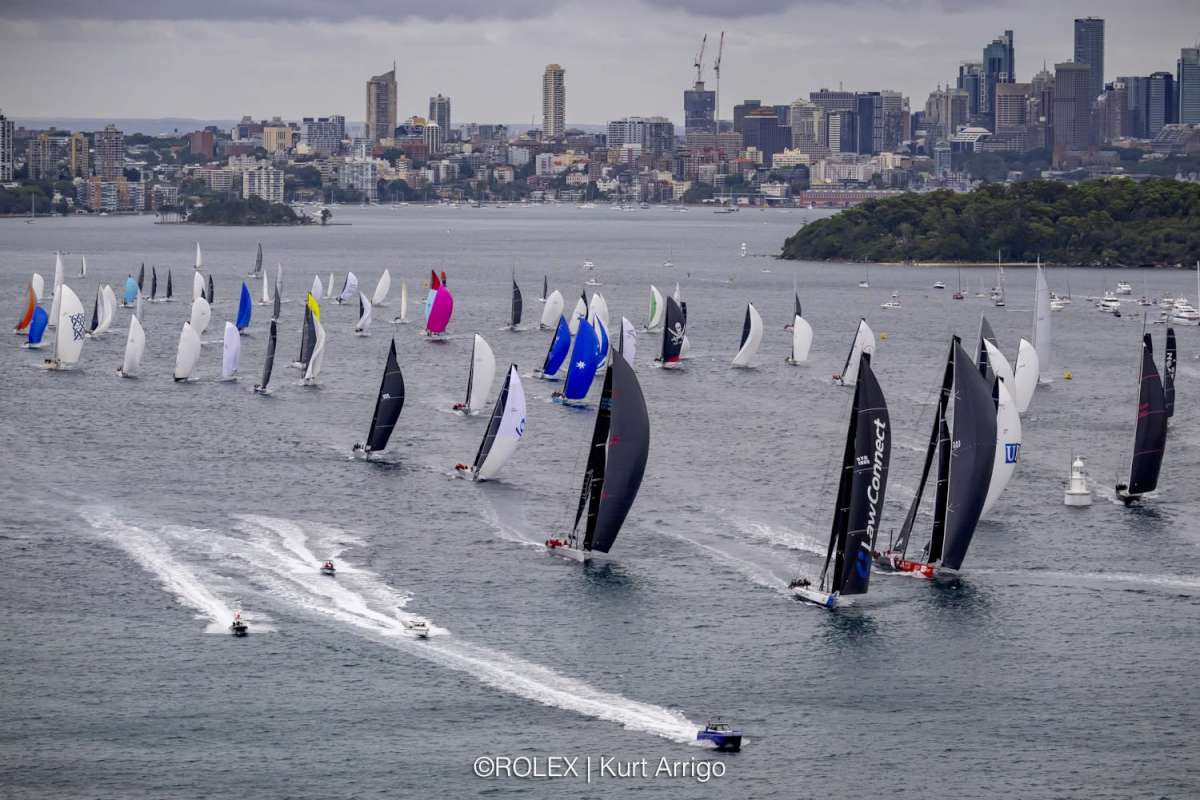By Lin and Larry Purdy:
“Was it as rough as you imagined it would be?” people ask about our east to west rounding of Cape Horn. Yes, it was rough. But on reflection, though Taleisin, our 9m (29ft7″) cutter encountered headwinds topping 60 knots near the Straits of LeMaire and even stronger when we reached the Pacific and battled “roaring 40's”, seas topping 15m (50ft), the situation felt less threatening than the “out of season” storm which caught us unexpectedly near Australia's Great Barrier Reef.
The severity of the seas we encountered off Australia, driven into stunning steepness by storm force winds blowing against two to three knots of current plus the threat of low laying coral reefs less than a hundred miles to leeward, made heaving-to assisted by a para-anchor, our only option. This storm forced the closure of all ports along the eastern coast of Australia from Sydney to Brisbane for three days and also caused the loss of three lives, five fish boats and two yachts. Two fully laden container ships each lay within sight of us for over 13 hours, held by their engines at slow, facing the tumbling breaking seas effectively hove to, just as we were. We have never before, nor since seen ships lying hove to.
For three days we'd beat to windward, using every wind shift, as we tried to complete the last leg of our fight south toward the Tasman Sea and clear of Australia's Great Barrier Reef. We'd just spent the southern hemisphere winter of 1988 exploring as far north as Townsville. For a month we'd been working south through the islands, hoping to catch the light northerly winds shown on the pilot charts for the month of October.
Fair winds had failed to materialize. Instead we'd had fresh headwinds and frustrating sailing. Anchorages that should have offered pleasant havens were rolly and uncomfortable. It was November 3rd by the time we reached Rosslyn Bay, just south of Yeppoon and 150nm from the open sea. We were concerned about getting clear of the tro Three days after reaching Rosslyn Bay we woke to a forecast of 10 to 15 knot north easterlies for 72 hours followed by a south easterly shift ahead of a frontal system with squalls to 25 knots, winds to shift to the north east following the passage of the front.
We backed up the coastal weather report with a phone call to Brisbane Airport. Mike S. meteorological officer for air traffic control warned me the forecast squalls might reach 35 knots for a short while.
“Haven't had a cyclone form in the Tasman before the middle of December in the ten years I've been in this job”, Mike added. “Let's set sail,” said Larry, “It's only 250nm to Mooloolaba, and with this forecast we should get in before the front. If not, 35 knots of wind isn't the end of the world.”
Only a few hours of northerly winds materialized. Then the headwinds returned. But our determination to reach our New Zealand Christmas rendezvous, plus unsettled conditions in each of the potential anchorages we checked along our route kept us doggedly sailing onward instead of diverting to Bundaberg, the only all weather anchorage in the area.
After 65 hours of beating, we were clear of the Great Barrier Reef, beam reaching with a fresh northerly. At 0330 light rain, occasional flashes of lightning plus a sudden increase in the wind that shifted quickly to the south, encouraged me to lower the big jib and secure it in the jib net. Just for comfort, I reefed the mainsail, set the staysail and kept Taleisin sailing close hauled on the offshore tack, though we could have lain southeast toward Mooloolaba.
Why not err on the side of prudence and gain more sea-room, I decided. Two hours later we were becalmed 50nm off the coast. Flashes of lightening showed a low, cigar-shaped band of clouds rolling toward us. That's when I decided to remove the jib from the forestay. The sea was almost flat with a low undulating swell as the first hint of daylight highlighted the approaching front. I was wearing nothing but my foul-weather jacket as I sat on the cabin-top enjoying the play of lightening behind the approaching clouds. Enjoyment faded quickly with the first gust of the frontal system.
Taleisin heeled until her cabin portlights were awash. For the first time ever, as I crawled forward to pull down first the staysail and then the reefed mainsail I found I had to hold my breath, and like a swimmer, turn to leeward to gulp in air free of wind driven rain and salt spray. Hailstones felt like buckshot as they hit my bare bottom.
With both sails lashed down securely the boat still lay heeled about 15°, beam on to the wind. I was just starting to pull the storm trysail up when I felt Larry alongside me. “Want me to do that?” he yelled.
“I'm okay, get the windvane cover down before it blows apart,” I answered.
“Get down below, you're soaked,” Larry called when I came into the cockpit to sheet the trysail in to hold Taleisin closer to the wind so she lay hove to. “I can take over. This is a hell of a lot more than 35 or 40k of wind.”
I gratefully went below, shaking with cold but also eager to catch the updated 0600 weather report. It wasn't what I wanted to hear – storm-warning effective immediately, small vessels return to port. A ridge of high pressure lying just off the Queensland coast. An area of low pressure intensifying and remaining stationary in the Coral Sea. Reports were of gusts to 85k, sustained winds to 65k. Wind decreasing to 45k by noon.
Soon after Larry climbed through the hatch in a cascade of rain and spray he offered to wipe down my back and broke out laughing. “You should see your bum; it's full of red polka dots, looks like you've been peppered by buckshot.” Larry said. Then he asked me to dig out the components of the combination hatch protector cum spray hood we use when we head offshore and I realized we'd screwed up.
With the favourable forecast, the relatively short and coastal nature of our voyage, we hadn't bothered to set the boat up for going to sea. Now a pile of books and tumble of bedding lay on the cabin sole, unrestrained by their seagoing lee cloth. The hatch protector/spray hood and other parts of our heavy weather offshore gear were in their in-port storage area right forward next to the chain locker.
Preparations that took about half an hour in port would now be a time consuming struggle that left us feeling less organized, less competent, less prepared.
Larry stayed on deck once he finally got the dodger and storm gear in place, watching the way Taleisin lay, adjusting the shock cords restraining her tiller and estimating her drift. Over the next hour the seas began to build. Heavy spray began pelting the cabinsides on a regular basis. Then Larry called down, “How many miles between us and the nearest reefs?”
“Nearest one is about 90nm north of us, but the Aussie current is going south it should help counter any drift. Now the front is past us wind should ease in 3 or 4 hours.”
“F….ing forecasts haven't been right in months. I want to slow down her drift just in case this wind has slowed down the current,” Larry yelled. “Seas are damn steep and her head's falling off in the gusts. I think it's time to get out the para-anchor.”
I stuck my head out side for the first time in an hour as I passed him the gear. The rain had quit but the situation was definitely not improving. How high were the seas? They definitely were not as high as those we encountered near Cape Horn, but never have I seen steeper nor more closely spaced seas, driven by wind-against-current.
Over the next hours seasickness kept me in the leeward bunk most of the time. I did not have the will to clean up the fallen gear that cluttered the cabin sole. Instead I shoved each new escapee in with the rest of the mess in the forward cabin. This mess, plus the reports I began hearing on the radio did nothing to make the situation seem better.
Within 100nm of us a massive air search was on for three fishermen we had come to know in Rosslyn Bay. They had headed off when we did, to work near Kepple Island. Now they had sent a mayday from a position that put them only 40nm upwind of the maze of the reefs lying to the north.
Within ten hours of the first blasts of that front, another search effort was being reported – Marymuffin, a 22m (72ft) maxi that had been a well-known racer under the name of Ragamuffin had called for assistance. Her skipper had tried to outrun the front and reach the anchorage inside the ring of coral that is Lady Elliott Reef. There is a narrow entrance through the coral.
But we later learned the anchorage turned into a hellhole for the five boats seeking refuge there when the waves went right over the windward side of the reef. Unfortunately for Marymuffin, the storm force winds set her 15nm north of her route. To clear the edge of the reef, she headed closer to the wind only to suffer a mast in the water knockdown which left crew and boat injured, engine non-functioning and mainsail slides jammed in the track so the crew could not reef nor take down the sail. Now she was in danger of foundering on the very reef her skipper had tried to reach for protection.
When Larry did not come below promptly after his latest hourly gear check I dragged myself out of the bunk and found him lying over the taffrail cursing. Another oversight had been escalated by the storm into a gear-threatening situation. When we first hove to earlier in the day, Larry had pulled in the taffrail log spinner and its 15m (50ft) of braided 5mm (3/16in) line and tucked it behind the windward cockpit combing. Now the occasional wave, rolling along the deck, had washed the spinner and line overboard.
The bucking of the boat had crocheted the line into an ever tightening web which had almost immobilized the trim tab. Larry was worried the strain could damage the self-steering vane. It took of us over an hour to finally cut away the last bits of our taffrail log spinner line to free trim tab.
Each six hourly update of the forecast added hours to the expected length of the storm. The reported wind speed for Fraser Island Lighthouse, approximately 55nm from our position, was 60 knots. By dark we'd become almost accepting of the motion, the roar of cresting seas to port and starboard of our slick, the splats of foam against the topsides. Larry and I stayed prone most of the time; taking turns to doze off and also taking turns going on deck every hour to ease the main para-anchor rode about a foot (about 0.35m).
Just before midnight an exceptionally loud snap woke Larry. The permanent preventer line attached to the rudder, which keeps the rudder from going over far enough to endanger the pintles, had chafed through. There was no way to rig new preventer lines.
To ease some of the shock loading Larry added two extra lengths of heavy-duty shock cord to the inboard end of the tiller. He sounded pretty discouraged as he listed the toll 18 hours had taken on our gear. His most careful use of anti-chafing gear had not prevented wear on the 16mm (5/8in) anchor rode holding the para-anchor. The shock cords holding the tiller were wearing through the woven coverings at the rate of one shock cord every three hours. “We've got a spare anchor rode and if this doesn't start to let up by morning I want to use it,” he commented. “Lin, why don't you put up the lee cloth just in case.”
He was using the windward pilot berth and lee cloth. I did not see a reason to put my lee cloth up since I was in the leeward berth lying against the pillow-padded hull. Besides, I am a bit claustrophobic and hate the closed in feeling it gives.
Just before dawn another screaming squall line roared down on us. Larry was quickly suited up and on deck. I remember dozing off. Then I was levitating, grabbing desperately for anything to hold as I heard the snapping rattle of the storm trysail, the loud roar of a breaking wave crest. I flew clear of the bunk as Taleisin tacked through the eye of the wind to come to a sudden halt, heeled sharply to starboard. All the breath flew out of me as my chest hit the bronze table support stanchion, then I hit the cabin sole, my teeth slammed against the ice chest so hard I was sure they would be knocked loose.
As I slowly pulled my face clear of the woodwork, Taleisin lurched sharply one more time, I felt something hit my head with a sharp but not terribly painful blow and warm liquid began running through my hair and across my face. I couldn't restrain the tears as I gingerly felt my head. I did not feel any sense of relief when I realized the liquid was coffee not blood, instead I was down right angry. My hair was now covered in coffee grounds from the pot I had meant to secure more tightly the last time I'd been on watch. To make matters worse, as I sat up and gingerly touched ribs that were badly bruised if not broken, I noticed the deep gouge the flying coffee pot had cut into the otherwise perfect varnished teak of the ice box facing. Just inches from that gash were a second set of dents, the exact shape of my front teeth.
By now I had time to realize no water had found its way into the boat and Larry had not called for urgent assistance, that meant Taleisin was still riding safely. But I could hear him winching and working with the lines that held the para-anchor. Chagrined and guilty at having ignored Larry's warning to use the lee cloth, I had most of the coffee grounds out of my hair before he opened the hatch and said, “Everything okay down there? I think the damn parachute is too big. We came up over a big wave, Taleisin headed close to the wind. The chute didn't seem to give at all and pulled over on to port tack. The rode is under the bobstay and if we don't get her back on the starboard tack it's going to chafe through.”
The hardest part of the task was getting into my foul weather gear. By the time I got on deck Larry had eased the bridle line and Taleisin lay head to wind, ranging first 10 or 15º onto port tack, then tacking through the eye of the wind onto starboard. I got into position at the sheet winch in the cockpit. Larry waited until Taleisin tacked over onto starboard, then he quickly paid out about 6 or 9m (20 or 30ft) of rode and as quickly as I could, I winched in the slack of the bridle line. Taleisin's head paid off as soon as the full strain came back onto the rode and bridle and she again lay on starboard tack.
After two days of laying to the para-anchor the wind eased below storm force, the seas began to crumble instead of breaking and sprays of spindrift no longer swept the deck. Only then did I show Larry the bands of bruises crossing my abdomen and lower chest. In a way I wish I'd waited. Now he wanted to get underway immediately and begin beating south toward medical attention. But I convinced him the motion of sailing onward in these conditions would be more uncomfortable for me than the motion we were experiencing as we lay hove-to.
By late afternoon the winds had dropped to gale force, the seas had lengthened and, with the latest forecast predicting another frontal system crossing our area within the next 36 hours, Larry and I prepared to retrieve the para-anchor.
I gingerly worked with him, for by this time I wanted more than anything to be in port, on an unmoving boat with a long hot shower, medical assistance and lots of time to rest. We use a barebones para-anchor set up, no floats, no trip line, no weights. We also have no engine to let us motor toward the chute and ease the strain on the anchor rode. But retrieval, though it took two hours to accomplish, was relatively easy in spite of the strong winds.
Larry removed the pennant line and block and Taleisin immediately laid head to wind. Just after each wave crest passed, the strain on the rode eased. Then Larry was able to winch in about six feet of rode. I sat on the deck box next to the mast tailing the line and each time Taleisin began rising on the next wave I put two turns on a mast cleat to hold the strain. Six feet (1.8m) at a time, we got closer to the parachute. When the swivel for the chute lay just at our bow, Larry snagged one of the shroud lines with the boathook. Then he began pulling the shroud line in by hand. The water spilled out, within a two or three minutes the chute collapsed and he had it on board.
As he secured the mass of the anchor rode against the windward bulwark we found almost 3m (10ft) of the anchor rode, the portion that had been riding in the snatch block at the bow, was chafed with almost 10% of its diameter chewed away.
I was too exhausted to sail onward that evening so we lay hove to under just the trysail until daybreak. Then we began close reaching toward the coast, storm trysail and staysail set in 35 to 45 knot winds while I lay on the pillow padded cabin sole. Our landfall confirmed Larry's concerns, and the sights he'd taken the afternoon before. The storm had caused the south going current to stall. We had been set 30nms north during the 2-1/2 days we lay hove to and only 60nm had separated us from the almost certain destruction of those just submerged coral reefs.
The lessons we learned or reinforced during that storm:
1. Seeking refuge by running back to a marginal anchorage can be far less safe than getting sea room and staying at sea.
2. We knew we'd be out in the open ocean for 100 miles. If we'd prepared the boat for an offshore passage, nothing would have got loose inside or on deck.
3. Lee clothes are not just for keeping someone in the windward bunk, they are for there to keep all crew safe in all bunks.
4. Heaving to, assisted by a para-anchor cuts down drift (in our case our drift was reduced to less than a knot once the chute was set, compared to 1.3 to 1.5 with just the trysail.)
5. The motion while lying in the hove-to position 50 degrees off the wind with the trysail steadying us was far more comfortable than lying directly to the wind as we did while Larry prepared to retrieve the para-anchor.
6. Having too large a para-anchor can be a mistake. Compared to the 2.4m (8ft) chute we'd always used previously on 7.4m (24ft 4in) five ton Seraffyn, the 3.6m(12ft) diameter chute on Taleisin held more than twice the volume of water and exerted tremendous pressure on the rode, the fairleads and blocks. The larger loads meant more stretching, more shock loads, more chafe.
Unfortunately, deciding what size parachute to use as a sea-anchor is not something that can be done with any mathematical or engineering certainty. But from this experience and from discussions with many sailors who have used similar gear, we have come to feel that manufacturers are leading sailors to err on the large size.
We used those lessons well as we voyaged onward: Downsizing to a smaller 8-foot diameter para-anchor, upsizing to a 10cm (4in) diameter snatch block to help reduce chafe on the main rode, making our sea-going heavy weather gear easier to get to, improving and strengthening our rudder stop system, adding extra heavy weather hand holds below and above decks, using weather forecasts and pilot chart information as guidelines instead of gospel.
Probably just as important, I came to trust Taleisin and myself to competently handle heavy weather, which let us eventually choose to sail from the Atlantic to the Pacific by way of Cape Horn with better preparations and far more confidence.
Lin and Larry Pardey have sailed together for 42 years and 180,000nm. They currently split their time between cruising on Taleisin in northern hemisphere waters and racing on board the 111-year-old classic gaff cutter Thelma in New Zealand. The storm described in this story did not deter them from xploring more of Australia's coasstline.
Storm Tactics Handbook and the companion DVD are among the 13 books and DVDs they have co-authored.
1. The Australian Bureau of Meteorology statistics show the majority of cyclones affect this area between mid December and Early April, but show occasional tropical storms.
2. The vane on Taleisin's self-steering gear is a lightweight wooden structure with a removable Dacron cover.
3. This includes the hatch protector/spray hood; shoulder high life lines, extra rope handrails on the cabintop, plus covers for the forward hawse.
4. Details of this arrangement can be seen on Storm Tactics DVD or in Storm Tactics Handbook.
5. Radio reports over the next hours added to the drama of the storm as we followed the rescue efforts. A large ferry was able to reach Marymuffin in time to tow her clear of the reef and escort her into Bundaburg. The air search for the crew of the sunken fish boat went on for almost two days. Their overturned aluminium tin tender was spotted, surrounded by large sharks dozens of miles from the Mayday position. Only one of the crew managed to survive, by clinging to the bottom of the tender.



